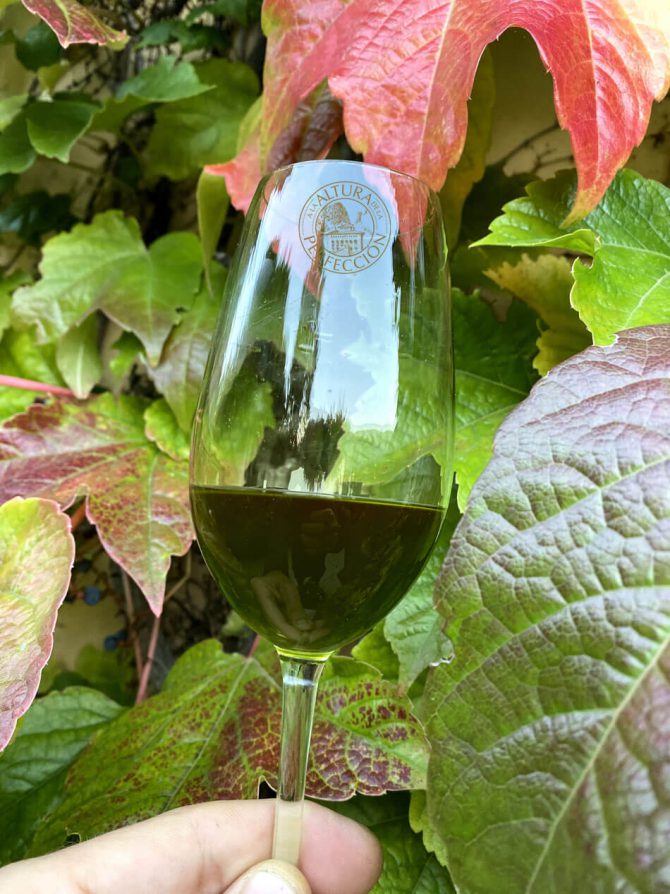
This is what our harvest for 2020 has been like.
We know that we still have a long way to go before a product, extra virgin olive oil of great quality, reaches the most demanding palates.
But what is certain is that after having collected our olives for the 2020 harvest, we’re more than satisfied.
First step accomplished and with a very high mark.
We’ve talked about it many times in this blog. Collecting the olive is one of the most important tasks.
That’s why we’re always on tenterhooks during the days harvesting takes place, looking at the sky and praying for ideal atmospheric conditions.
As far as weather conditions are concerned, we can’t do much. That’s a question of luck. Although today, with the technology we have to hand, we can see what the weather will be like and be prepared for it.
But what is really within our control is reducing to the maximum the time necessary to transport the olive from our groves to the oil mill. The longer it takes, the worse the quality. And it’s obvious that that’s the last thing we want.
We use the most modern means to do so. Now, we’re going to go into each and every one of the points in detail.
Ideal temperature
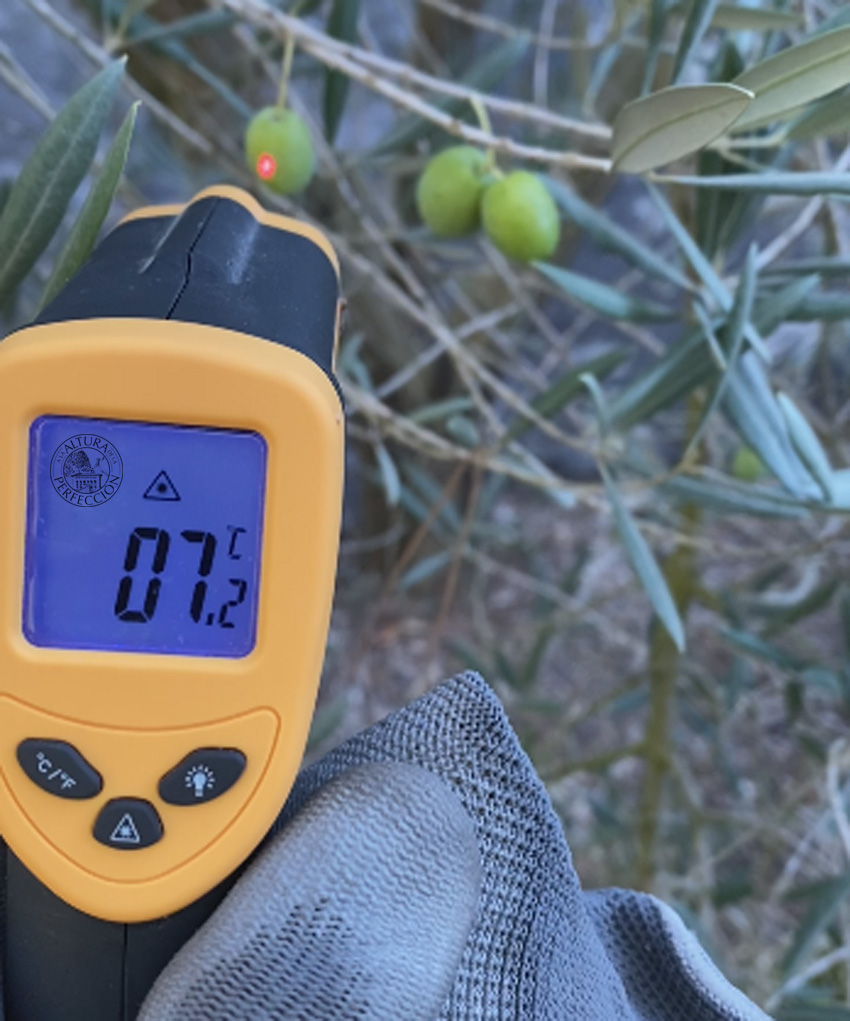
We’re going to give you some information about the climatology during the time harvesting took place.
Everything perfect, fortunately. At night the temperature was around 4 degrees Centigrade during the process. During the day, the temperature didn’t go above 15. As we’ve just said, perfect.
With these temperatures, the olive enters the mill at less than 10 degrees thus obtaining virgin oils which are an intense green colour and with an agreeably bitter and spicy touch. At the same time, these low temperatures encourage the olive tree to vegetate, concentating all of its nutrients in the olive.
These low temperatures and relatively high humidity leave their mark on the personality of our extra virgin olive oils.
We harvest the olive at the end of the month of October and we run the risk of the dreaded frosts in our area. We have to also point out that with temperatures over 25 degrees, it’s difficult to obtain the quality that we set ourselves to be able to satisfy our clients.
We collect the olive green, before it has started to change colour. In this way, we obtain the best quality and the extra virgin olive oil that we extract keeps all of its nutritive qualities besides having an unbeatable taste and aroma.
Olives, while they’re still green, are less productive. We obtain less litres of oil per kilo. The riper they are, the higher the production but the lower the quality.
The net production we obtain at Masía El Altet on the first day of harvesting is 8.5 per cent. In round figures, we obtain 8.5 litres of oil for every 100 kilos of olives. But this productivity increases as harvest time advances until on the last day, after 10 days had gone by, the figure of 12.5 litres per 100 kilos was reached.
We can see an increase in oil of almost 50% in only 10 days.
Is the oil better when there is less output?
No. In fact, the best oils are obtained during the period halfway between the first and tenth days of harvesting.
But the colour is of a more intense green the first day compared with the last.
However, it’s not as easy as it might appear. We must collect the olive when it’s in its most perfect state. The experience we’ve acquired over these years helps us greatly to achieve this.
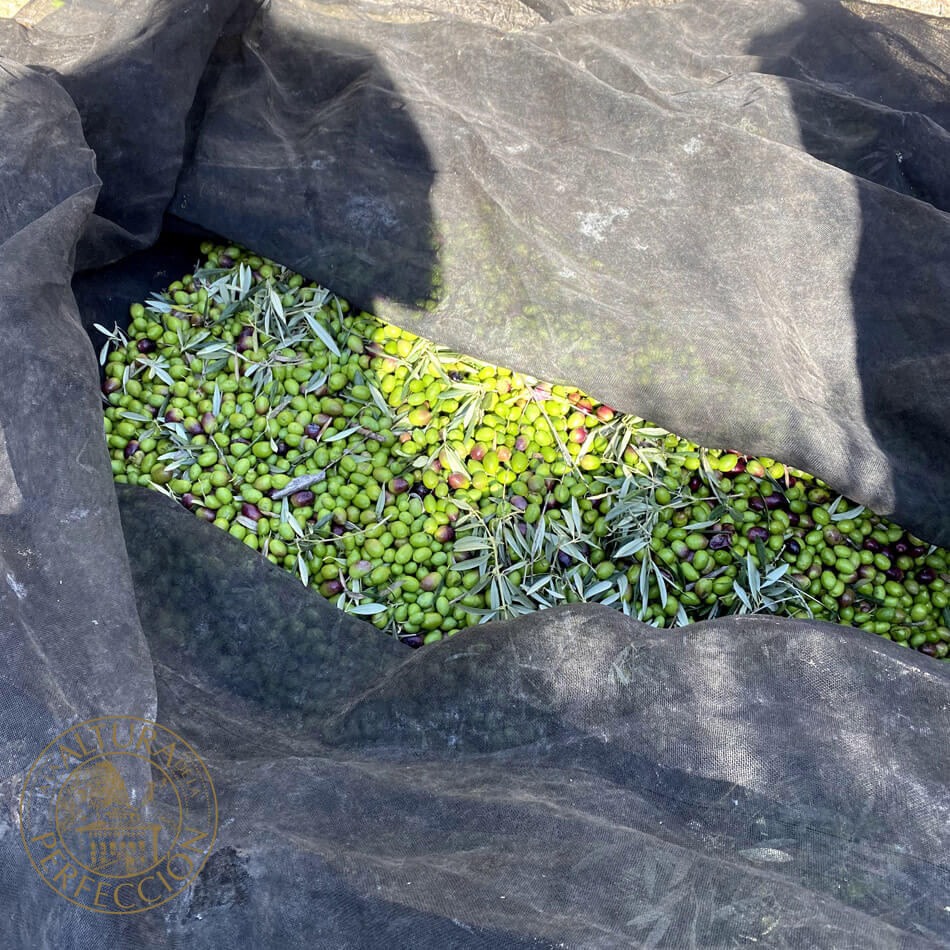
Harvesting methods used
In our groves, situated in the Mountains of Alicante and surrounded by two natural parks which are that of the Font Roja and Serra de Mariola, we use both mechanized and manual methods.
Mechanized methods
Inverted umbrella attached to the tractor
The inverted umbrella attached to the tractor is the most productive method. With the vibration, the olives fall into the umbrella. The vibration obviously has to be extremely precise so as to never damage either the tree or the fruit. This means of harvesting is becoming more extensive throughout the whole of Spain.
Hand held shaker
This is a heavy tool which the operator hangs from his shoulder.
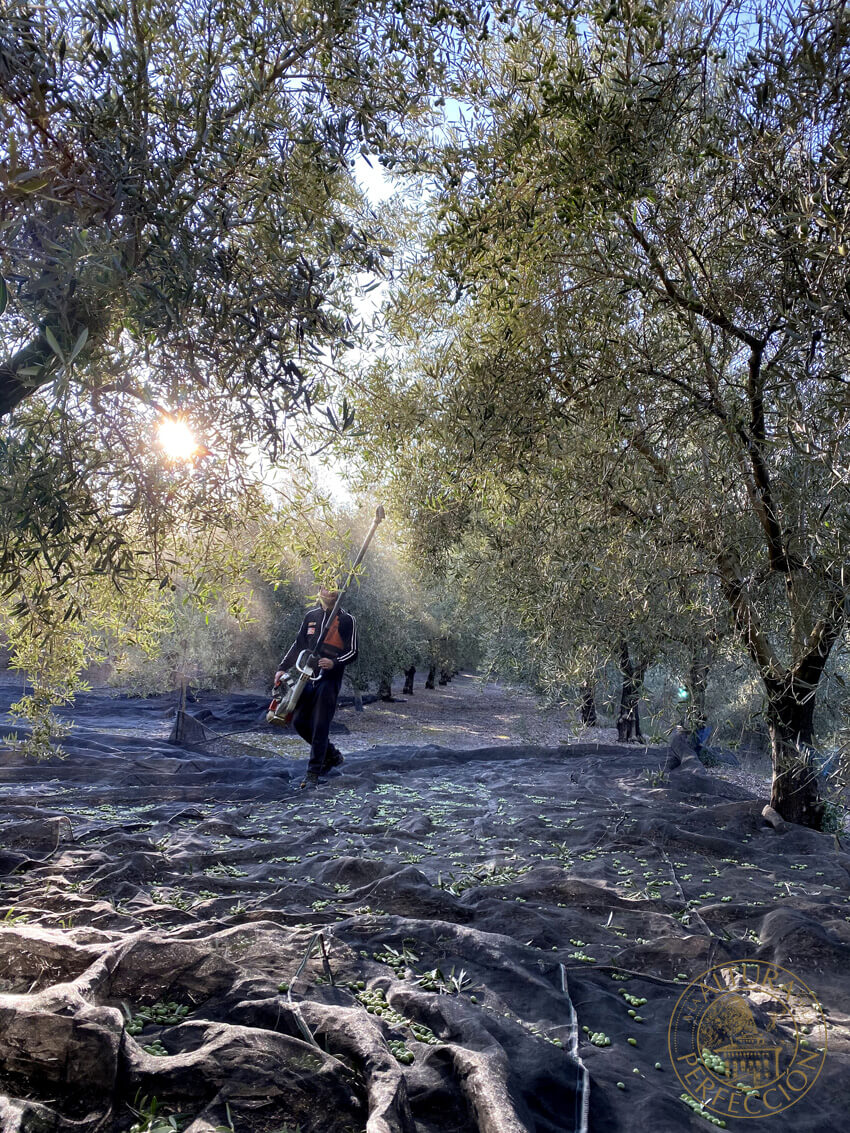
Comb
This a lighter tool than the previous one and is held in both hands. It has plastic teeth which work in a zig-zag fashion with sufficient force to make the fruit fall without damaging it. Samples for the following year remain intact for their future production.
Manual method
All of the previously mentioned mechanized methods have to be accompanied by a manual method. That is beating. For this, we use fibre-glass poles. We calculate that we harvest 20 per cent of the olive grove using this method.
And it’s because there are places that the machines can’t get to. Or the highest parts of the trees.
But what can’t be forgotten is that this hand beating must be carried out by expert hands. Farmers and workers who already have a great deal of experience in this challenging work.
A poor beating process can damage the branches and thus, put at risk the following year’s production.
We only get rid of the weakest branches when we go on to another phase of producton: pruning. This process is also carried out by very expert hands.
We couldn’t obtain quality extra virgin olive oil without the help of our workers. We will always be eternally grateful for their collaboration.
Well, that is what we wanted to tell you about the 2020 harvest. We’ve finished the first phase. Collecting the olive. We’ve still got a lot of work ahead to bring you the best extra virgin olive oil in the world.
So you’ll be hearing from us again soon.
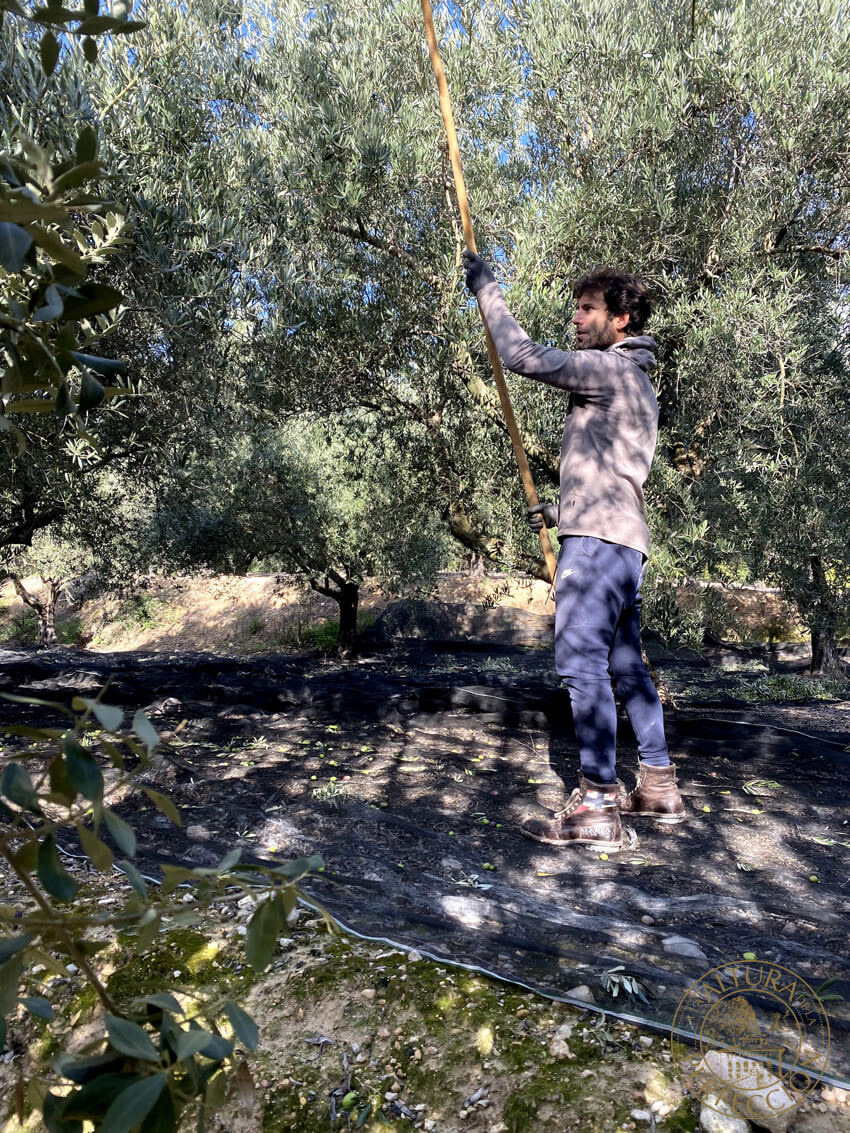
By the way, if you’ve liked what we’ve told you, don’t forget to share this post on social networks.
We want to thank again our workers for all of their hard work. They are such great professionals!! Even in adverse conditions, their productivity was incredible. Thanks, thanks and thanks again.
